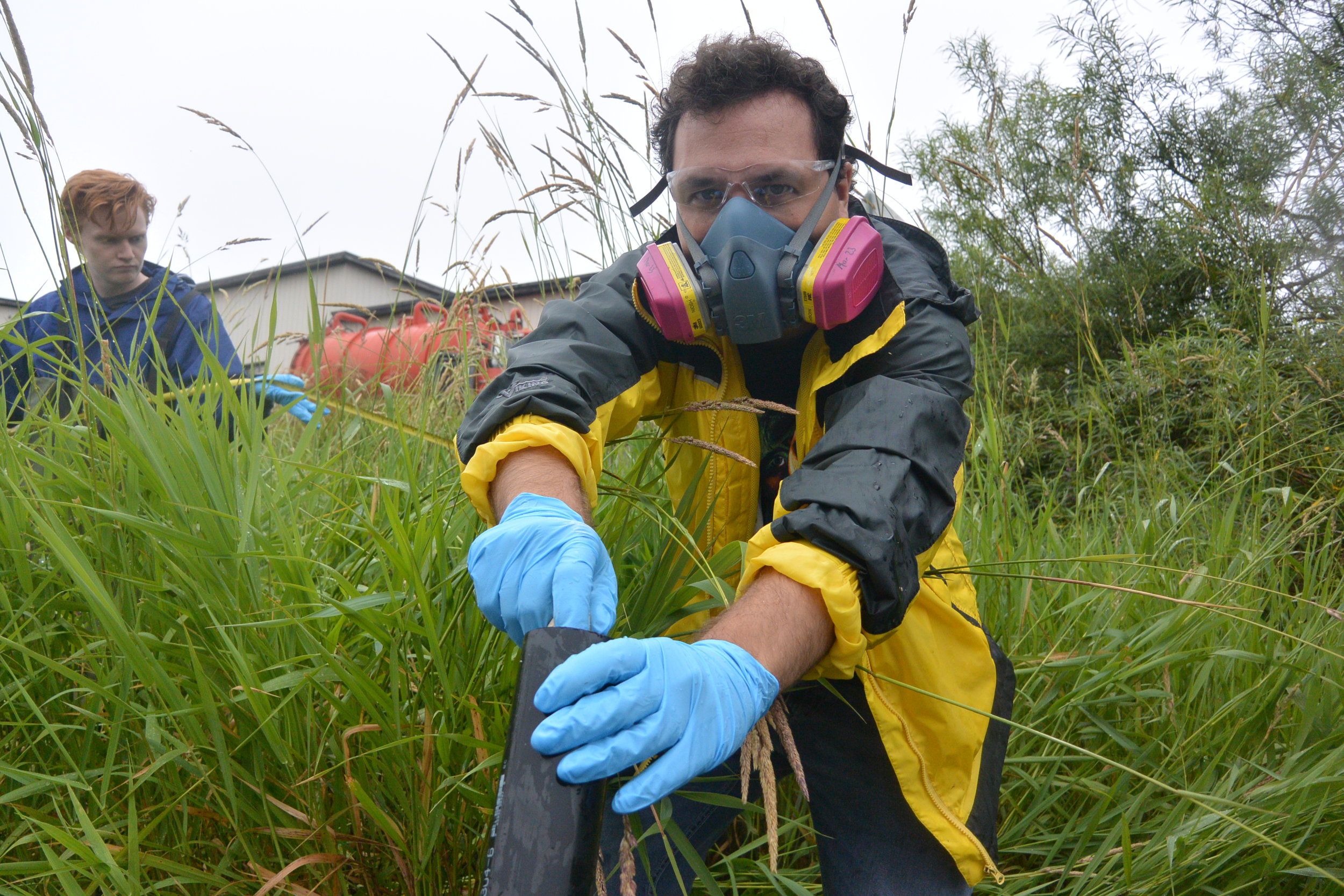MARSH CREEK CREOSOTE REMEDIATION
Marsh Creek Creosote Remediation
The long history of industrial activity in Saint John has led to immense creosote contamination in Marsh Creek sediments. Creosote is a dark oil that is used to treat wood. In some portions in the lower river the sediment is completely black, and when touched, produces a large oily sheen. This is not the kind of environment that promotes healthy aquatic life, and as the stream feeds directly into the Saint John Harbour, it is crucial that we do our best to remove it. Polycyclic aromatic hydrocarbons (PAHs) are the toxic components that make up creosote. The sediments in Marsh Creek currently have average total PAH values over 4000 mg/kg, which towers in comparison to guidelines and the reference conditions for the Saint John Harbour (Van Geest et al., 2015). In 2018 ACAP Saint John piloted a project using bioremediation techniques to degrade the hydrocarbons that make up creosote. This means that we added hydrocarbon degrading bacteria to the sediments in the stream, in hopes that it would reduce the contamination. This project will continue in coming years. We hope to see PAH levels decline dramatically and to restore Marsh Creek back to a healthy habitat for all aquatic life.
Van Geest JL, Kidd KA, Hunt HL, Abgrall MJ, Maltais MJ, Mercer A. 2015. Can. Manuscr. Rep. Fish. Aquat. Sci. 3076: v + 97 p.

